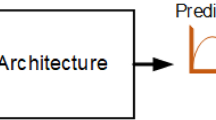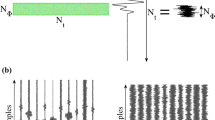Abstract
Estimating the target position of low-frequency sound sources in a shallow sea environment is difficult due to the high cost of hydrophone placement and the complexity of the propagation model. We propose a compressed recurrent neural network (C-RNN) model that compresses the signal received by a vector hydrophone into a dynamic sound intensity signal and compresses the target position of the sound source into a GeoHash code. Two types of data are used to carry out prior training on the recurrent neural network, and the trained network is subsequently used to estimate the target position of the sound source. Compared with traditional mathematical models, the C-RNN model functions independently under the complex sound field environment and terrain conditions, and allows for real-time positioning of the sound source under low-parameter operating conditions. Experimental results show that the average error of the model is 56 m for estimating the target position of a low-frequency sound source in a shallow sea environment.
摘要
由于水听器的布置成本高且水下声音传播模型复杂,在浅海环境中进行低频声源目标位置估计较为困难。提出一种基于数据驱动的压缩循环神经网络(compressed recurrent neural network,C-RNN)模型。该模型首先将矢量水听器接收到的声源信号压缩为动态声强信号,然后将声源位置进行GeoHash编码用于该模型的先验训练,最后使用训练好的模型进行浅海低频声源目标的位置估计。与传统数学模型相比,所提C-RNN模型能在复杂声场环境和地形条件下以低参数工况实时估计声源位置。实验结果表明,该模型对浅海环境中低频声源目标位置的平均定位精度为56米。
Similar content being viewed by others
References
Agarwal A, Kumar A, Agrawal M, 2015. Iterative adaptive approach to DOA estimation with acoustic vector sensors. OCEANS, p.1–8. https://doi.org/10.1109/OCEANS-Genova.2015.7271605
Bharathi BMR, Mohanty AR, 2018. Underwater sound source localization by EMD-based maximum likelihood method. Acoust Aust, 46(2):193–203. https://doi.org/10.1007/s40857-018-0129-8
Chai T, Draxler RR, 2014. Root mean square error (RMSE) or mean absolute error (MAE)?—Arguments against avoiding RMSE in the literature. Geosci Model Dev, 7(3): 1247–1250. https://doi.org/10.5194/gmd-7-1247-2014
Chao A, Shen TJ, 2003. Nonparametric estimation of Shannon’s index of diversity when there are unseen species in sample. Environ Ecol Stat, 10(4):429–443. https://doi.org/10.1023/A:1026096204727
D’Spain GL, Luby JC, Wilson GR, et al., 2006. Vector sensors and vector sensor line arrays: comments on optimal array gain and detection. J Acoust Soc Am, 120(1):171–185. https://doi.org/10.1121/1.2207573
Demuth HB, Beale MH, Jess OD, et al., 2014. Neural Network Design. Martin Hagan.
Dushaw B, 2014. Acoustic Tomography, Ocean. In: Njoku EG (Ed.), Encyclopedia of Remote Sensing. Springer, New York, USA, p.4–11. https://doi.org/10.1007/978-0-387-36699-9_211
Felisberto P, Santos P, Jesus SM, 2010. Tracking source azimuth using a single vector sensor. Int Conf on Sensor Technologies and Applications, p.416–421. https://doi.org/10.1109/SENSORCOMM.2010.66
Fox A, Eichelberger C, Hughes J, et al., 2013. Spatiotemporal indexing in non-relational distributed databases. Int Conf on Big Data, p.291–299. https://doi.org/10.1109/BigData.2013.6691586
Gu JX, Wang ZH, Kuen J, et al., 2018. Recent advances in convolutional neural networks. Patt Recogn, 77:354–377. https://doi.org/10.1016/j.patcog.2017.10.013
Hildebrand JA, 2009. Anthropogenic and natural sources of ambient noise in the ocean. Mar Ecol Progr Ser, 395:5–20. https://doi.org/10.3354/meps08353
Ian G, Yoshua B, Aaron C, 2016. Deep Learning. The MIT Press, USA.
Li GY, Kawan B, Wang H, et al., 2017. Neural-network-based modelling and analysis for time series prediction of ship motion. Ship Technol Res, 64(1):30–39. https://doi.org/10.1080/09377255.2017.1309786
Li TC, Su JY, Liu W, et al., 2017. Approximate Gaussian conjugacy: parametric recursive filtering under nonlinearity, multimodality, uncertainty, and constraint, and beyond. Front Inform Technol Electron Eng, 18(12):1913–1939. https://doi.org/10.1631/FITEE.1700379
Moussalli R, Srivatsa M, Asaad S, 2015. Fast and flexible conversion of Geohash codes to and from latitude/longitude coordinates. Proc IEEE 23rd Annual Int Symp on Field-Programmable Custom Computing Machines, p.179–186. https://doi.org/10.1109/FCCM.2015.18
Porter MB, 2011. The BELLHOP Manual and User’s Guide: Preliminary Draft. Technology Report, USA.
Praczyk T, 2015. Using evolutionary neural networks to predict spatial orientation of a ship. Neurocomputing, 166:229–243. https://doi.org/10.1016/j.neucom.2015.03.075
Prieto A, Prieto B, Ortigosa EM, et al., 2016. Neural networks: an overview of early research, current frameworks and new challenges. Neurocomputing, 214:242–268. https://doi.org/10.1016/j.neucom.2016.06.014
van Gerven MAJ, Bohte SM, 2017. Editorial: artificial neural networks as models of neural information processing. Front Comput Neurosci, 11:114. https://doi.org/10.3389/fncom.2017.00114
Wittekind D, Schuster M, 2016. Propeller cavitation noise and background noise in the sea. Ocean Eng, 120:116–121. https://doi.org/10.1016/j.oceaneng.2015.12.060
Zhao AB, Ma L, Ma XF, et al., 2017. An improved azimuth angle estimation method with a single acoustic vector sensor based on an active sonar detection system. Sensors, 17(2):412. https://doi.org/10.3390/s17020412
Zhou JB, Zhang MH, Piao SC, et al., 2019. Low frequency ambient noise modeling and comparison with field measurements in the South China Sea. Appl Acoust, 148: 34–39. https://doi.org/10.1016/j.apacoust.2018.11.013
Author information
Authors and Affiliations
Contributions
Xianbin SUN designed the research. Xinming JIA and Zhen WANG processed the data. Xinming JIA drafted the manuscript. Xianbin SUN and Yi ZHENG helped organize the manuscript. Xianbin SUN and Xinming JIA revised and finalized the paper.
Corresponding author
Additional information
Compliance with ethics guidelines
Xianbin Sun, Xinming JIA, Yi ZHENG, and Zhen WANG declare that they have no conflict of interest.
Project supported by the National Natural Science Foundation of China (No. 51475249) and the Key Research and Development Program of Shandong Province, China (No. 2018GGX103016)
Rights and permissions
About this article
Cite this article
Sun, X., Jia, X., Zheng, Y. et al. A data-driven method for estimating the target position of low-frequency sound sources in shallow seas. Front Inform Technol Electron Eng 22, 1020–1030 (2021). https://doi.org/10.1631/FITEE.2000181
Received:
Accepted:
Published:
Issue Date:
DOI: https://doi.org/10.1631/FITEE.2000181




